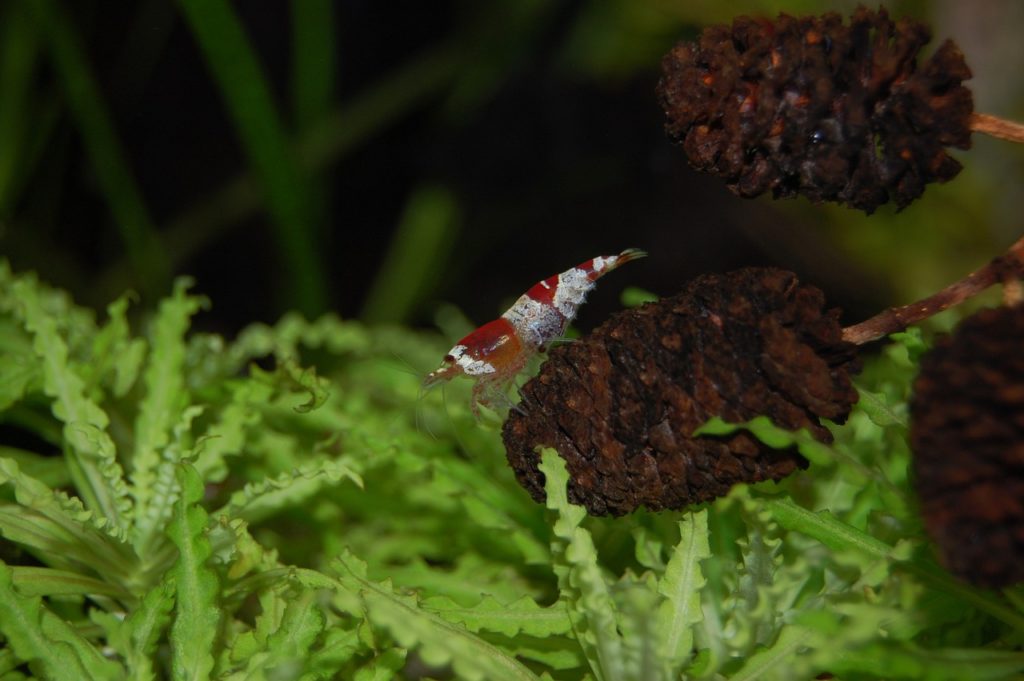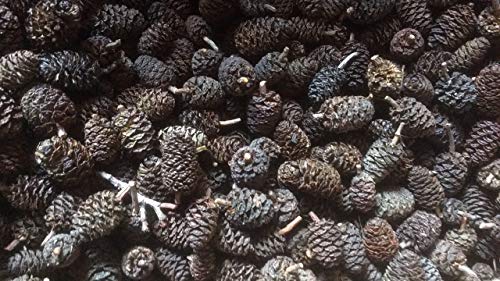alder cones in the Aquarium contribute but why? Alder cones belong in each one shrimp aquarium, at least that's what you read about them again and again nano aquariums owners. But what effect do the alder cones have that makes them so important and that they belong in the aquarium? Should you also put these in a normal aquarium? How do alder cones change the water values? They are also eaten by ornamental fish or shrimp the gefress? And can I collect alder cones in the forest myself? We answer these questions and more in the following guide.

What are alder cones anyway and what do they look like?
In botany, alders are known primarily because they belong to the birch family. The alder is divided into green alder, gray alder and black alder. These trees can also be found in our latitudes, so we can already tell you that you don't have to buy alder cones, you can look for them yourself. But more on that later. If you are looking for alder trees, you will usually find them in damp areas such as streams or on the banks of lakes. The alder can be recognized by its leaf shape, although it can also be confused with the maple. But if you find the alder cones, you will know very quickly whether you are in the right place. Of course we have also attached a picture of it.
A confusion with pine cones is almost impossible, because alder cones are much smaller and usually a combination of several small cones.
What effect do alder cones have in the aquarium?
Now let's get to the special one Importance of alder cones in aquaristics. Alder cones come into play again and again, especially when it comes to treating fungal diseases. The reason here is their particularly germ-inhibiting effect. Alder cones are said to reduce fungi. Thus, they are often fungal diseases and fungal infections used and then added to the aquarium water.
But again and again, especially from shrimp breeders, one reads about their general health-promoting effect. That is why you often find alder cones in healthy fish and shrimp.
The second reason for an eventual use of alder cones is that influencing the water parameters. The PH value is influenced accordingly by the humic acid which contains alder cones. Dier should therefore slip into the acidic range. So the PH value decreases. For example, if you want to reduce a rather high PH value of 8, for example, you should put alder cones in the aquarium. Of course, how far this lowers depends on many other factors.
Through this influence and the contained humic acid, but the aquarium water can also change color. For many ornamental fish or shrimp / invertebrates, this is a further advantage because they feel more natural. In their usual environment in nature is a certain turbidity of the water normal, even if we aquarists are not really enthusiastic about it. The view of our protégés is therefore somewhat impaired.
And there may be another reason why you should consider adding alder cones to the aquarium. For many shrimp, this is an ideal breeding ground to look for food. microorganisms are usually found in abundance here. In addition, other residents and algae also settled.
For many aquarists, however, alder cones also represent an optical beautification of the aquarium. This can therefore also be a reason for using alder cones as decorative and furnishing items.
Let's summarize the most important advantages of alder cones in the aquarium:
- Good against fungal diseases and fungal infections
- Reduces the PH value in the aquarium
- Serves as a source of food
- Cloudy the water
- Strengthens the defenses of invertebrates and fish
- Visual enhancement of the aquarium
Where and how can I collect alder cones myself and what do I have to consider?
Of course you can get alder cones in the E-Commerce or also in Specialized trade buy it, but it doesn't have to be. If you go for a walk, you should be able to find the alder cones yourself very quickly. Of course not in every season, because in winter it is difficult to find these cones. But you also have the opportunity there and you can also stock up in autumn (which is the best time for collecting).
The alder cones are mainly found in the area of streams and lakes. Alders can be found wherever it is quite humid. It is best to combine this with that collecting stones.
In any case, you should not look for and collect alder cones in the area of roads and other polluted areas. There they are mostly contaminated by sulfur and other substances. We also give the tip to first soak the alder cones a little so that any harmful substances can be dissolved. Of course, you shouldn't make this process too long, because then the alder cones lose their effect. One day of watering should be enough here. Then they can go to the aquarium. These may initially float to the surface, but this subsides fairly quickly and they sink to the bottom. If you want to speed up this process, watering helps on the one hand and you can also weight the branches accordingly.
How long should alder cones remain in the aquarium?
This question has also often reached us. We have to go back a bit here, because of course it depends on the exact purpose why you use alder cones. If this is due to the influence on the water values, then the spigots must be changed frequently. Otherwise they lose their effectiveness. Otherwise you can leave the cones in the water for quite a long time. Even until they completely dissolve and become sludge. At the next queasy eyes they are thus transported out of the water.
You can definitely leave them in the aquarium for about 4 weeks. Or even longer.
Alder cones are not only food, but also medicine, influence on the water values and maybe even a visual beautification of an aquarium.



